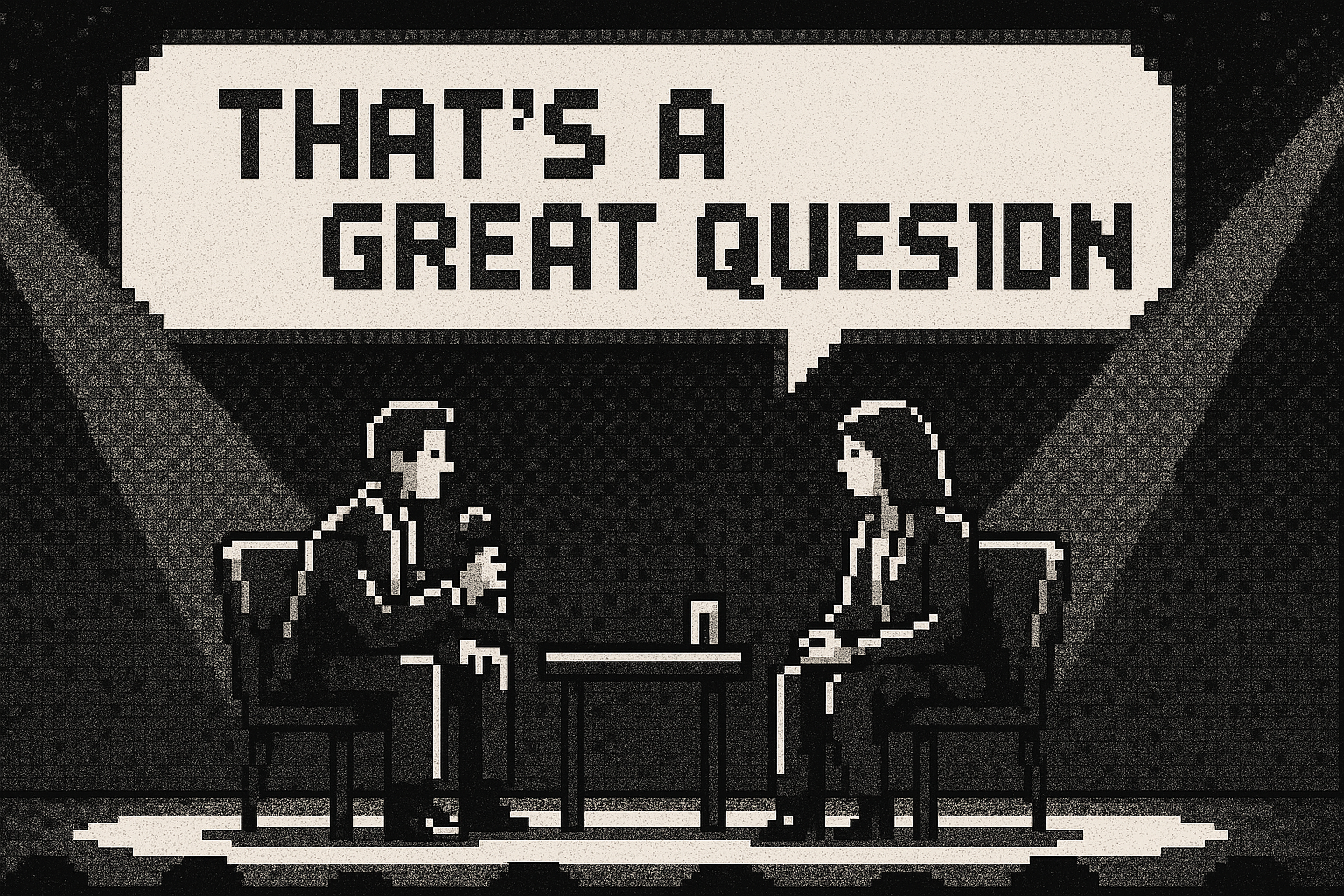
That's a great question!
In the realm of interviews and meetings, there’s a phrase that’s become so common it’s almost a reflex: “That’s a great question!”. While on the surface, this might seem like a polite acknowledgment or even a compliment, its rampant overuse has led many to question its sincerity and effectiveness. The phrase, often employed more as a stalling tactic than genuine praise, serves as a buffer, buying the respondent time to think.
Regardless of their field, professionals find themselves under constant pressure to deliver immediate, well-considered responses. The expectation of instant expertise can be daunting, leading many to grasp any available tool to buy thinking time. “That’s a great question” has become such a tool, a verbal pause button that allows the speaker a moment to collect their thoughts.
The overuse of this phrase, however, is not without consequence. When every question is met with “that’s a great question,” the phrase loses meaning. It becomes a filler, devoid of sincerity, which can lead to a decrease in the perceived value of the interaction. Attendees of meetings and interviews may wonder if any question posed is genuinely considered good or if the phrase is merely a conversational placeholder.
Strategies for More Meaningful Engagement
-
Pause Before Responding: It’s acceptable to take a brief pause before answering a question. This pause can be just as effective as verbal fillers for gathering thoughts, and it comes across as more thoughtful and sincere.
-
Acknowledge Without Defaulting: If a question genuinely stirs interest or poses a challenge, acknowledge it specifically. For example, “I appreciate the depth of this question” or “You’re touching on a crucial point here” offers a more personalized and sincere acknowledgment.
-
Foster a Culture of Thoughtfulness: Encourage an environment where taking a moment to think is valued over rapid-fire responses. This approach not only reduces the reliance on filler phrases but also promotes more considered and meaningful dialogue.
-
Use Varied Vocabulary: If you find the phrase slipping out, consider alternative acknowledgments that can convey appreciation for the question without sounding rote. Phrases like “That’s an interesting perspective” or “You raise a vital point” can serve the same purpose with more sincerity.
-
Practice Active Listening: Sometimes, the best way to prepare for thoughtful responses is to practice active listening. By fully engaging with the questioner and their query, the need for filler phrases diminishes.
While “that’s a great question” can be a useful tool in moderation, its overuse as a stalling tactic dilutes its value and can undermine the sincerity of professional exchanges. By adopting alternative strategies for thoughtful communication, professionals can foster more engaging, sincere, and productive dialogues.